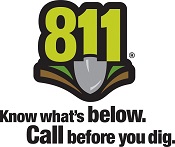Pipeline Leaks
Recognizing a Pipeline Leak
Using your sense of sight, smell and sound will help you recognize a suspected leak. Here's what you should look for:
- Sight - A dense fog, mist or white cloud. Discolored vegetation, bubbling in water or blowing dust.
- Smell - Natural gas is naturally odorless. However, a distinctive smell is added, similar to rotten eggs, so that you can smell a potential leak.
- Sound - Hissing, whistling or roaring noise.
Pipeline companies regularly conduct walking and vehicle leak surveys of their facilities. These trained inspectors look for potential danger to pipelines, such as construction activity, as signs of gas leaks.
What you should NOT do if a leak occurs:
- DO NOT touch, breathe or make contact with the leak.
- DO NOT light a match, start an engine, turn light switches on or off, use a cell or home phone, or do anything to create a spark.
- DO NOT attempt to extinguish any fire.
- DO NOT attempt to operate valves.
What you should DO if a leak occurs:
- DO leave the home, building and area of the suspected leak, and get to a safe area.
- DO call 911 to notify police and fire officials.
- DO warn others to stay out of the area.

















